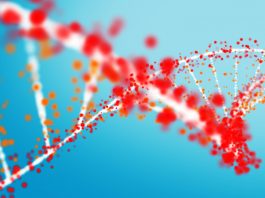Researchers have advanced the development of quantum computers by using light-addressable molecules for qubit systems.
Light can be used to operate quantum information processing systems, such as quantum computers, quickly and efficiently.
Researchers at Karlsruhe Institute of Technology (KIT) and Chimie ParisTech/CNRS have significantly advanced the development of molecule-based materials suitable for use as light-addressable fundamental quantum units.
The research, which has been published in the journal Nature Communications, presents a nuclear-spin-containing dimeric europium(III) molecule as light-addressable qubit.
This team has been led by Professor Mario Ruben at KIT’s IQMT and Strasbourg´s European Center for Quantum Sciences – CESQ and Dr Philippe Goldner at École nationale supérieure de chimie de Paris (Chimie ParisTech/CNRS).
The ability to process information is crucial for many areas of scientific research, such as drug development and climate forecasts. This process is currently done using digital computers, where the state of a bit is either 0 or 1. This limits the performance of and it can be complicated to handle complex problems related to real-world tasks.
Meanwhile, quantum computers use quantum bits (qubits) to process information. Qubits have many states between 0 and 1 simultaneously due to a special quantum mechanical property referred to as quantum superposition, meaning data can be processed in parallel. Therefore, the potential computing power of quantum computers is much greater than digital computers.
“In order to develop practically applicable quantum computers, the superposition states of a qubit should persist for a sufficiently long time. Researchers speak of ‘coherence lifetime’,” explained Professor Mario Ruben, head of the Molecular Materials research group at KIT’s Institute of Nanotechnology (INT). “However, the superposition states of a qubit are fragile and are disturbed by fluctuations in the environment, which leads to decoherence, i.e., shortening of the coherence lifetime.”
In order to maintain the superposition state long enough for computational operations, isolating a qubit from the noisy environment is conceivable. Nuclear spin levels in molecules can be used to construct superposition states with long coherence lifetimes because nuclear spins are weakly coupled to the environment, shielding the superposition states of a qubit from any disturbing external influences.
To build a quantum computer, many qubits are required. Molecules are ideal qubit systems as they can be arranged in large numbers as identical scalable units and can be addressed with light to perform qubit operations. As well as this, the physical properties of molecules, such as emission and/or magnetic properties, can be tailored by changing their structures using chemical design principles.
The researchers found that the dimeric europium(III) molecule can be utilised as light-addressable qubit. This molecule is a rare earth material that exhibits luminescence when excited by ultraviolet light-absorbing ligands surrounding the centre. After light absorption, the ligands transfer the light energy to the europium(III) centre, thereby exciting it. Relaxation of the excited centre to the ground state leads to light emission.
This process is known as sensitised luminescence. Spectral hole burning – special experiments with lasers – detect the polarisation of the nuclear spin levels, suggesting the generation of an efficient light-nuclear spin interface. This allows for the generation of light-addressable hyperfine qubits based on nuclear spin levels.
“By demonstrating for the first time light-induced spin polarisation in the europium(III) molecule, we have succeeded in taking a promising step towards the development of quantum computing architectures based on rare-earth ion-containing molecules,” explained Dr Philippe Goldner.









